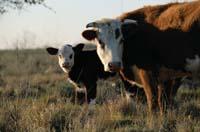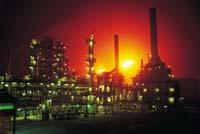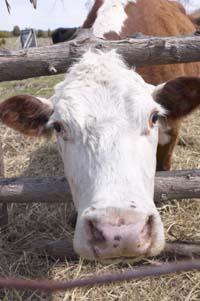Cows' Runs, Guilty of Global Warming
2005/04/24 Galarraga Aiestaran, Ana - Elhuyar Zientzia

According to a study by the University of California (USA), methane released into the air by cows is mainly emitted by corrodes. Until now it was thought that most of the stool came out, but it seems that with the stool only 40% comes out, and the rest is released into corros.
These results are very interesting since these percentages can affect changing the food. This can have consequences on climate change or global warming. Methane is one of the gases that contributes most to the greenhouse effect. According to scientists, 15% of the warming effect is due to methane. And 5-10% of the mass that cows eat is transformed into methane.
The rest of the ruminants also release a lot of methane into the atmosphere. Methane is produced as a result of the reactions that occur in your digestive system and, just as we release carbon dioxide when breathing, these must release large amounts of methane.
Numerous sources of methane
However, this is not the only source of atmospheric methane. Methane is mainly generated in anaerobic reactions, i.e. reactions that occur without oxygen, and many bacteria get the energy needed to live. Therefore, bacteria are large producers of methane. It is estimated that microorganisms generate 400 million tons of methane per year.

Large amounts of methane are also produced in swamps and areas with rotten matter, as well as in some agricultural activities. In this sense, rice fields stand out, where a lot of methanes are generated. Now rice is grown differently, and dry fields do not produce so much methane, but wet ones are big methane generators.
On the other hand, the release of methane is important in combustion processes. They estimate that 15% of methane is generated in wood burning and landfills. Sometimes wood is burned in the forests as a result of accidents or natural fires, while in other cases there is an intentional fire by the human being to be agricultural lands. Therefore, the combustion processes that generate methane can be both natural and man-made.
Where there are fossil fuels there is also a large amount of methane, both naturally and in the processes of exploitation of these fuels by humans. On the other hand, it must be taken into account that the main component of biogas is methane, that is, it is an important source of energy.
Kyoto Protocol

I don't know if you will never be able to use detached gases in the corrugated cows to heat the houses. At the moment, they contribute to the warming of the Earth by its greenhouse effect. However, the research carried out in California does not have as its sole conclusion that methane is released especially in the correrias, but has also clarified something more. It seems that the amount of methane released by cows is not the same as previously thought.
In a 1938 study in California, it is estimated that each cow emits 5.8 kg of gas a year. Now they have seen that it is about half, specifically 2.8 kg. The main component of the gases produced by cows is methane, although there are also ammonium and others.
To carry out the research they have put the cows in two chambers to prevent the gases from leaving to the outside and have recorded through the chambers the operation of the cows. This has allowed them to know when to expel gases: when they eat, when they reflect or when they defend. Therefore, it is clear that they have conducted an in-depth investigation.

However, more research will be needed to find out if the methane production of Californian cows is standard, that is, if the amount of methane generated by both cows from Euskal Herria and India is comparable to that of California. On the other hand, scientists should analyze whether it is worth influencing. In fact, in the Kyoto Protocol a gram of methane and 21 grams of carbon dioxide equivalent are in the emissions trading market. From there we get the bills!
Cows of Mars
If the methane in the Earth's atmosphere gives a lot to talk about, what to say about Mars! Since they have confirmed the presence of methane in the atmosphere of Mars, NASA and ESA are very happy. Now they have more evidence to believe that there are living beings. Hopeful remains have already been found, especially in relation to the possibility of water. Methane, for its part, has led them to think that microorganisms can exist. If not, where does that methane come from? Besides bacteria and cows there are other options, of course, but it is so nice to imagine cows in the deserts of Mars...
Published in 7K.




